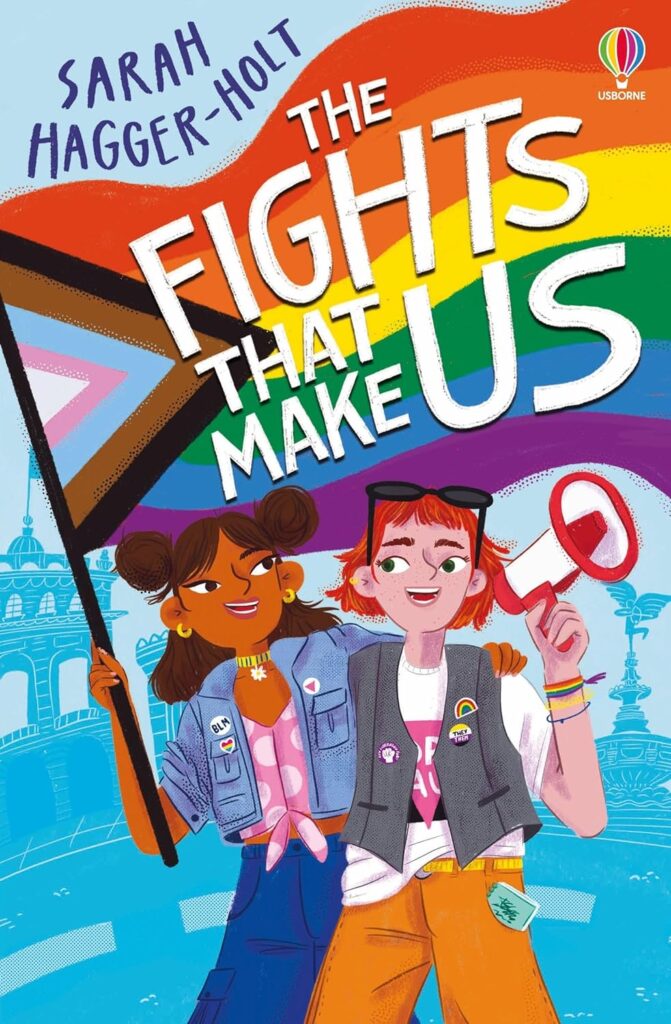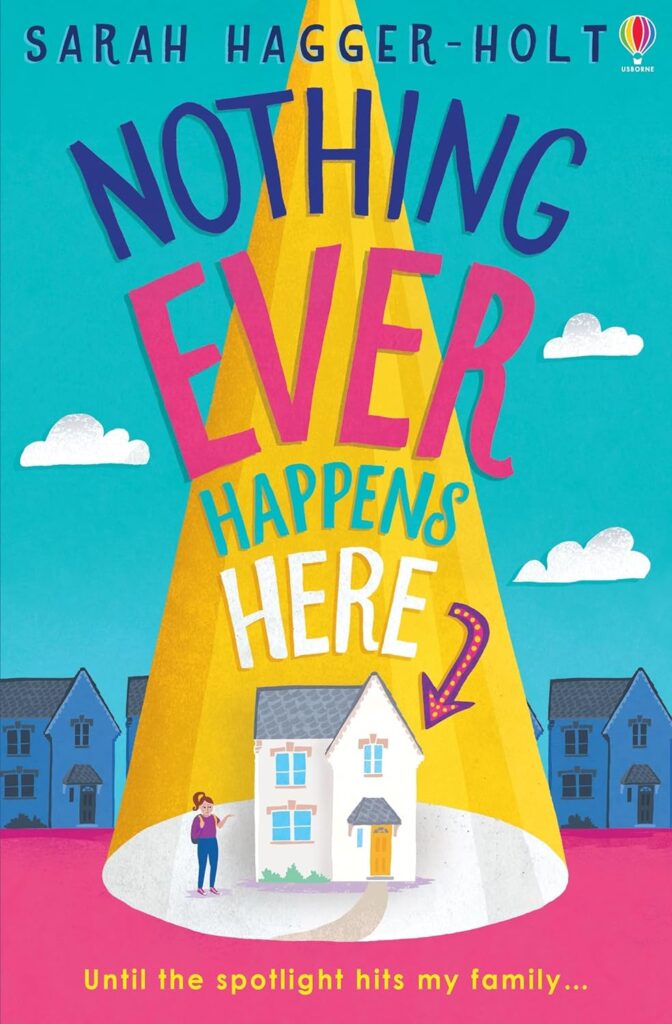Sarah Hagger-Holt’s beautiful, inclusive LGBTQ+ inclusive books are some of my favourite reads, so it’s a real honour to have her join me in The Reading Realm today to talk about her new book, THE FIGHTS THAT MAKE US!
Before we settle down in The Reading Realm to talk about your new book, what’s your drink and snack of choice?
Oh, that’s easy! A cup of tea and custard creams!
Without giving too much away can you tell us about The Fights That Make Us?
The story begins when 12-year-old Jesse discovers an old diary in their cousin Lisa’s attic, which recounts Lisa’s involvement in the 1980s campaign against anti-LGBTQ legislation, Section 28. The Fights That Make Us follows Jesse as, helped by best friend Simran, they uncover the mystery of the diary and how it relates to their own lives and struggles.

How is The Fights That Make Us similar to your debut book Nothing Ever Happens Here? How is it different?
In both books (all four of my books in fact!) the central character is in their second year of secondary school and is adapting to changes in their family. They also deliberately contain a range of LGBTQ+ characters of different ages and identities. It’s really important for me to show my readers that there are so many different ways to be an LGBTQ+ person! I hope both books have the same tone – warm-hearted but not simplistic, as well as being realistic, introducing you to people and situations that you might find in real life.
The main difference is that Nothing Ever Happens Here is set entirely in the present day (well, 2020) and The Fights That Make Us covers both the 1980s and the 2020s.

The book is full of LGBTQ+ history and is so informative! What sort of research did you carry out for the book? What was the most interesting thing you found out?
Loads of research! I talked to people who lived through that time, read a lot of books (especially memoirs), listened to podcast interviews, watched youtube videos of speeches and news broadcasts, drew on my own experience and went through newspaper cuttings from the time in the Bishopsgate Institute archives.
I already knew about the lesbian protestors who abseiled into the House of Lords when Section 28 was passed, but enjoyed reading about them and their boldness all over again. The strangest thing for me was going through the archives and seeing someone I recognised from my local area from when I was a kid, pictured in the paper handing in an anti-gay petition to our local council. It really brought it all home!
I loved the dual narrative in the book. Hearing both Jesse’s story and Lisa’s story was brilliant. How did you go about writing both stories? Did you write all of Jesse’s story first for example and then punctuate it with extracts from Lisa’s diary? The editing process must have been interesting!
I always write in the order of how I want the story to unfold in the book, although I do a lot of thinking and planning before I actually start chapter one!
In the first draft of The Fights That Make Us, I included the whole of Lisa’s diary in one huge section, straight after Jesse finds it in the attic. Quite rightly, my editor encouraged me to split into smaller chunks to better draw the parallels between then and now, and not lose Jesse’s voice!
What can you tell us about the names of each chapter? What inspired this?
I do love my 80s music. In my own attic, I still have cassette tapes of music recorded off the radio, even though I have nothing to play them on any more.
Lisa’s girlfriend Nicky makes her in a mixtape when they first get together and I thought it would be fun to name each chapter after one of the songs. Matching the chapter content and title took a while, but I loved including some of my favourites, like ‘Don’t Leave Me This Way’ and ‘Manic Monday.’
What other LGBTQ+ inclusive books have you enjoyed recently?
A recent favourite was ‘Last Night at the Telegraph Club’ by Malinda Lo. It’s a beautifully written and researched young adult novel about a young Chinese American girl, falling in love and coming out as a lesbian in the 1950s. Lily is such a strong, relatable character and the picture it paints of a half-forgotten world is dazzling.
Finally, can you describe The Fights That Make Us in three words?
Ah, that’s too hard! How about… empowering, empathetic and page-turning?

